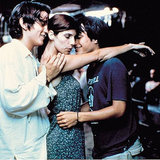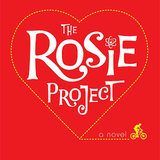Pictures of Love Padlocks Around the World
Lock Your Love, and Throw Away the Key
Yesterday, the Pont des Arts bridge in Paris nearly collapsed due to the thousands of "love locks" that are attached to the footbridge over the Seine river. When part of the railing collapsed, the bridge was evacuated and the section replaced with a wooden panel (already covered in graffiti, as pictured). But what exactly are love locks?
Shrouded in superstition and romance, love padlocks, aka love locks, are a worldwide trend that have been spotted everywhere from Budapest to Paris to Seoul to Moscow. They even made an appearance in Parks and Recreation's 100th episode. Traditionally, the padlocks are affixed by a couple to symbolize their eternal love, but the origin is unknown.
What we do know is that in Rome, the padlocks on the Ponte Milvio bridge are attributed to Federico Moccia's book I Want You, and the padlock tradition in Serbia began with a legend dating back before WWI about a woman who died of a broken heart. Serbian girls would write down their names with their loved ones' on padlocks and affix them to the bridge where the infamous lovers used to meet, Most Ljubavi (the Bridge of Love). In Fengyuan, Taiwan, the locks are attached in pairs to an overpass in the city's train station and called "wish locks." The story goes that the trains generate a magnetic field that energizes the locks, granting the wishes. And according to a legend in Montevideo, Uruguay, there's a fountain where if you put a lock in it with the initials of two people in love, they will return to the fountain and be "locked in love" forever.
But love locks aren't without controversy. Despite Venice, Italy, being known for its romance, officials have been trying to crack down on the tradition. The city's administration is not feeling the love and is worried they'll cause damage to the buildings and bridges. One would think the ritual would be welcomed since they are less destructive than, say, graffiti or gum walls (have you seen those? Disgusting), but if Venice shut down the trend, it wouldn't be alone. In Prague this year, officials have been removing padlocks from the Charles Bridge. Paris stripped the locks on several bridges in 2010, and Florence removed 5,500 padlocks on the Ponte Vecchio bridge in 2006. But love perseveres, as usually it's only a matter of time before they return. Take an international trip with us now to see the locks of love!




















































































